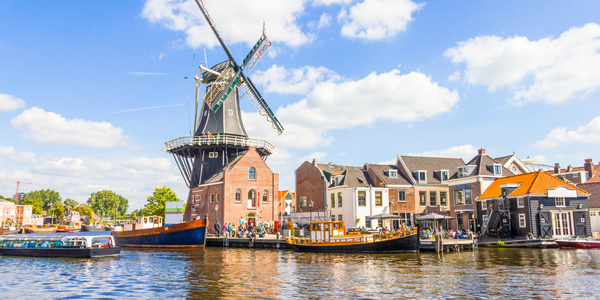Customer Company Size
Large Corporate
Region
- Europe
Country
- United Kingdom
Product
- Aptean Respond
Tech Stack
- Business Intelligence
- Quality Assurance
Implementation Scale
- Enterprise-wide Deployment
Impact Metrics
- Productivity Improvements
- Customer Satisfaction
Technology Category
- Application Infrastructure & Middleware - Data Exchange & Integration
Applicable Industries
- Cities & Municipalities
Applicable Functions
- Quality Assurance
Services
- System Integration
About The Customer
Essex County Council is an upper tier local authority based in Chelmsford and is the main public sector body in Essex. The council looks after highways, social care, infrastructure and education, amongst other responsibilities. The council has been using Respond, Aptean’s Complaints and Feedback Management solution, since 2008 to manage inbound enquiries and complaints, including Local Government Ombudsman (LGO) complaints, Chief Executive correspondence, Corporate and social care statutory complaints, Member service enquiries (a service which is provided for County Councillors), and Freedom of Information and Environmental Impact Regulation requests. While the initial Respond system at Essex CC was fit for purpose at the time of implementation, Essex CC realised that both its own technology and that of Respond had moved on considerably since then.
The Challenge
Essex County Council (Essex CC) had been using the Respond system from Aptean since 2008 to manage inbound enquiries and complaints. However, as technology and the council's own processes evolved, the older version of Respond was struggling to meet the council's needs. The council needed greater clarity in reporting on the data within Respond, which the earlier version was struggling to support. A lack of Business Intelligence (BI) made it difficult for Essex CC to find root causes of issues and to take preventive action on them across the council. The council also had a requirement to publicly report on statutory complaints data, which was difficult to extract using the earlier version of Respond. The reporting process overall was a very manual one, including running different reports and then merging them outside of the system. The council also identified inefficiencies in the Quality Assurance (QA) process, which was manual and time-consuming, and left ample room for error. The council needed a simple interface which would display a user’s progress, as well as allow them to choose from a longer list of enquiry or complaint types that could be updated when needed.
The Solution
Essex CC decided that the most efficient solution would be to upgrade to the latest version of Respond, rather than starting from the ground up with a completely different solution. The upgrade would be able to support their ongoing requirements and provide them with the insights and efficiency they needed. The latest version of Respond is a leap forward in Case & Complaints Management technology, and this version was perfect for Essex CC to align with its improved internal processes. Working closely with Aptean’s Customer Solutions team, the upgrade was completed on the last day of March and was in use by the council’s employees two days later. The latest version of Respond features new and improved tools that have given Essex CC the clarity they needed regarding their reporting, as well as manageable workflow and QA processes.
Operational Impact

Case Study missing?
Start adding your own!
Register with your work email and create a new case study profile for your business.
Related Case Studies.

Case Study
Turning A Stadium Into A Smart Building
Honeywell created what it called the “intelligent system” for the National Stadium in Beijing, China, turning the venue for the opening and closing events at the 2008 Summer Olympics into a “smart building.” Designed by highly controversial artist Ai Weiwei, the “Bird’s Nest” remains one of the most impressive feats of stadium architecture in the world. The 250,000 square meter structure housed more than 100,000 athletes and spectators at a time. To accommodate such capacity, China turned to Honeywell’s EBI Integrated Building Management System to create an integrated “intelligent system” for improved building security, safety and energy efficiency.
.png)
Case Study
Smart Street Light Network (Copenhagen)
Key stakeholders are taking a comprehensive approach to rethinking smart city innovation. City leaders have collaborated through partnerships involving government, research institutions and solution providers. The Copenhagen Solutions Lab is one of the leading organizations at the forefront of this movement. By bringing together manufacturers with municipal buyers, the Copenhagen Solutions Lab has catalyzed the development and deployment of next-generation smart city innovations. Copenhagen is leveraging this unique approach to accelerate the implementation of smart city solutions. One of the primary focus areas is LED street lighting.

Case Study
Buoy Status Monitoring with LoRa
The Netherlands are well-known for their inland waterways, canals, sluices and of course port activities. The Dutch Ministry of Infrastructure indicates that there are thousands of buoys and fixed items in and near water environments that would profit from IoT monitoring. One of the problems with buoys for example, is that they get hit by ships and the anchor cable breaks. Without connectivity, it takes quite some time to find out that something has happened with that buoy. Not to mention the costs of renting a boat to go to the buoy to fix it. Another important issue, is that there is no real-time monitoring of the buoys at this moment. Only by physically visiting the object on the water, one gains insight in its status.

Case Study
Barcelona Case Study
Barcelona’s heavy traffic and its associated high levels of pollution were the primary factors that motivated some companies and universities to work on strategies for improving traffic in the city centre. Bitcarrier is one of the technologies involved in the In4Mo Project, whose main objective is to develop the applications that form the core of smart mobility, one of the fundamental pillars of the smart city concept.

Case Study
China Mobile Smart Parking
Smart Parking, powered by NB-IoT technology, is making it easier for drivers to find free parking spots. Cities can better manage their parking assets and maximize the revenue available to them as a result. Drivers searching for parking create congestion and pollution by circling and hunting for available parking. Smart Parking services are able to significantly ease these problems by guiding a driver directly to a parking space.








